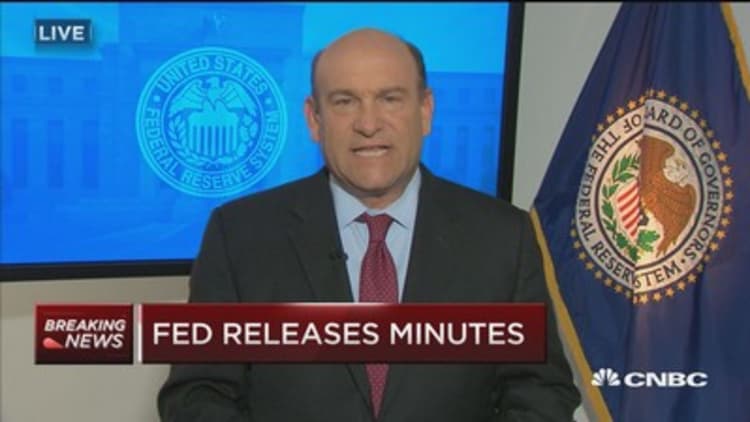
The very last page of minutes from May's Federal Open Market Committee meeting contained arguably the most important news — that changes were ahead for the central bank's bloated balance sheet.
It may have been no accident.
That's because policy makers likely are hoping to take the quietest path possible to unwind the $4.5 trillion portfolio of bonds it accumulated primarily in a post-financial crisis effort to boost economic growth.
The plan, awaited by financial markets for months or even years, was tucked into the minutes almost as an afterthought — nothing to see here, we'll just unwind the most ambitious stimulus effort in central banking history over here in the corner while the financial markets go on their happy way.
"They're very eager not to be a source of disruption or uncertainty," said Scott Clemons, chief investment strategist at Brown Brothers Harriman. "The way the details appear on page 12 of the 12-page minutes, they're not trying to make too big a deal of it. They're projecting business as usual."
The balance sheet unwind, though, is very much not business as usual.
Rather, the process will seek to slowly and predictably undo years of quantitative easing, where the Fed engaged in three rounds of monthly bond buying that ended in 2014. The program generated important results, keeping interest rates low in the post-crisis environment and coinciding with the second-best bull run in stock market history — even if the results for the broader economy were considerably less robust.
Reversing course will require a deft hand, allowing the bonds to roll off the balance sheet at maturity while not disrupting the market and causing government debt yields to spike. The minutes indicated that mostly all of the FOMC members approved of a process in which the Fed will target a certain level of proceeds to roll off each month while continuing to reinvest anything above that cap.
In going low-key with the announcement, the Fed sent a signal to markets that it shouldn't make too big a deal of it, either. Policy makers want to avoid the "taper tantrum" that started in May 2013 when they first indicated they would ease and then eventually end the bond-buying program.
"When taper 2.0 begins, it's not going to come as a surprise to anyone," Clemons said. "They're eager to prepare the market for that. They're doing a good job. ... They're softening the beaches."
Heading into Wednesday's release, most of Wall Street shared the opinion that the Fed would raise rates twice more this year then likely use the December meeting to tee up the balance sheet reduction to begin in early 2018.
However, the decision to go ahead and release the plan provided indication that the time frame could move up some.
Morgan Stanley expects the Fed now to make a formal announcement in September that the balance sheet roll-off will begin in October. For the full year, the firm sees a rate hike in June, a pause in September to implement the balance sheet operations, and another hike in December.
As for quantity, Morgan Stanley expects the maximum balance sheet drawdown to come to $300 billion in the ensuing four quarters — a mild nick in the overall portfolio but a deliberate move nonetheless. Running off that level would be the equivalent of a 0.35 percentage point rate hike, according to the analysis.
Minutes indicated that the cap level for runoff would start low then increase at a steady pace.
"The Fed has been inching closer to balance sheet action since reintroducing the topic at
its December 2016 meeting," the firm said in a note to clients. "If there were baby steps made, this was one giant baby as the Fed now appears to have hammered out the tough decisions and is on the cusp of action."
One outcome from the move is that the market, which has expected just one more interest rate hike, could be in for a surprise.
Even with the release about the balance sheet runoff, the market puts the chance of a second hike in December at just 45 percent, according to the CME. The minutes left little doubt about a June hike, and indicated future moves would be likely so long as the data cooperate.
"Clearly the Fed wants to be very careful not to disrupt the apple cart as this is unchartered territory," Marc Bushallow, managing director of fixed income at Manning & Napier, said in a statement. "This may allow them to continue raising rates more in line with their projections which is not priced into the ... market at this point."


